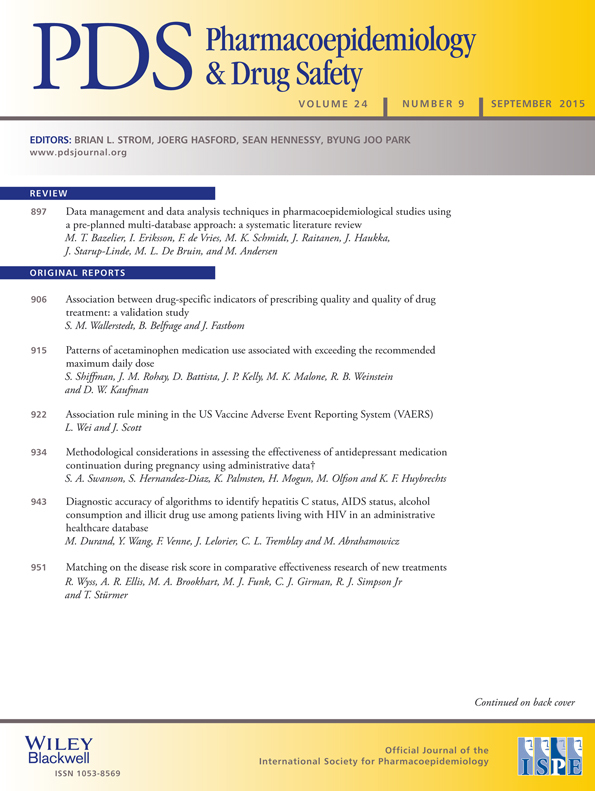Diagnostic accuracy of algorithms to identify hepatitis C status, AIDS status, alcohol consumption and illicit drug use among patients living with HIV in an administrative healthcare database†
Abstract
Purpose
This study aims to develop and evaluate diagnostic algorithms for AIDS, hepatitis C status, alcohol abuse and illicit drug use in the administrative healthcare database of the Province of Quebec, Canada (Régie de l'assurance-maladie du Québec (RAMQ)).
Methods
We selected HIV-positive patients contributing to both the RAMQ database and a local clinical database, which was used as gold standard. We developed algorithms to identify the diagnoses of interest in RAMQ using data from hospital discharge summaries and medical and pharmaceutical claims databases. We estimated and compared sensitivity, specificity, positive predictive and negative predictive values and area under receiver operating curve for each algorithm.
Results
Four hundred twenty patients contributed to both databases. Prevalence of conditions of interest in the clinical database was as follows: AIDS 233 (55%), hepatitis C infection 105 (25%), alcohol abuse 106 (25%), illicit drug use 144 (34%) and intravenous drug use 107 (25%). Sensitivity to detect AIDS, hepatitis C, alcohol abuse, illicit drug use and intravenous drug use was 46% [95%CI: 39–53], 26% [18–35], 50% [37–57], 64% [55–72] and 70% [61–79], respectively. Specificity to detect these conditions was 91% [86–95], 97% [94–98], 92% [88–95], 95% [92–97] and 90% [87–93], respectively. Positive predictive values were 87% [80–92], 71% [54–85], 68% [56–78], 87% [79–93] and 72% [62–80], respectively. Area under receiver operating curve varied from 0.62 [0.57–0.65] for hepatitis C to 0.80 [0.76–0.85] for intravenous drug use.
Conclusions
Sensitivity was low to detect AIDS, alcohol abuse, illicit drug use and especially hepatitis C in RAMQ. Researchers must be aware of the potential for residual confounding and must consider additional methods to control for confounding. Copyright © 2015 John Wiley & Sons, Ltd.




